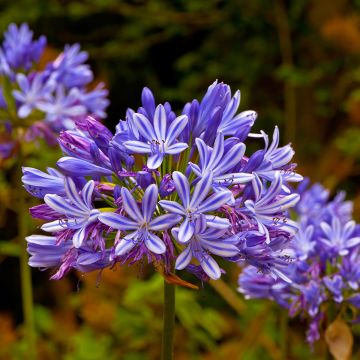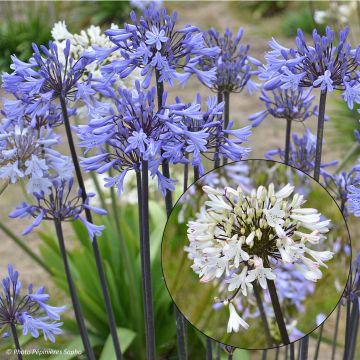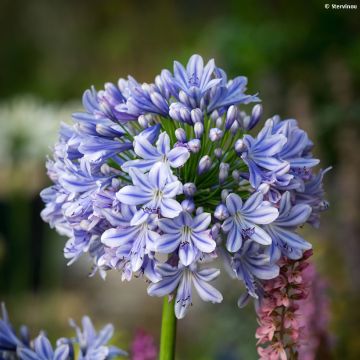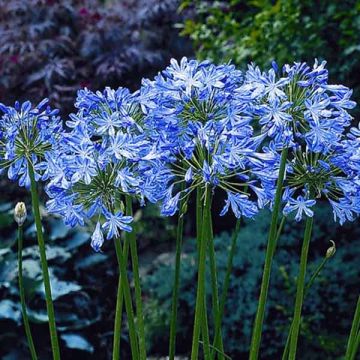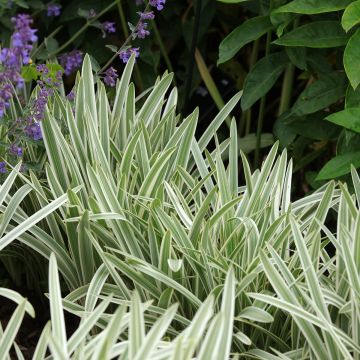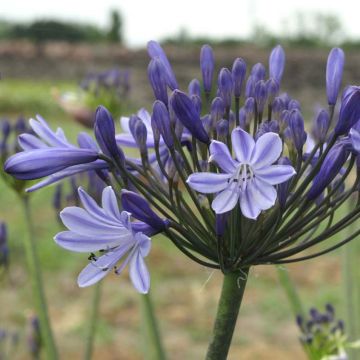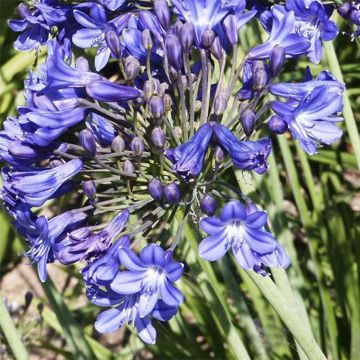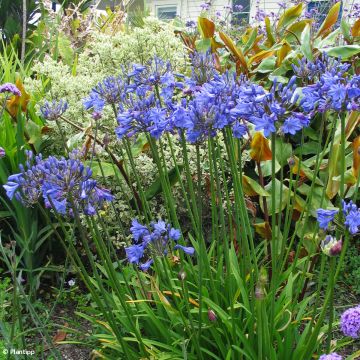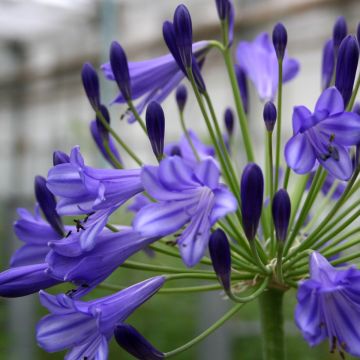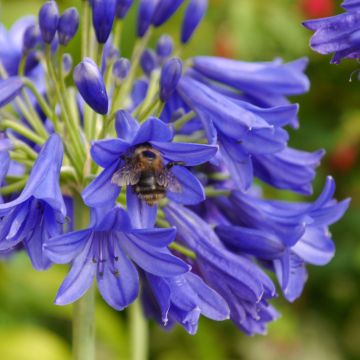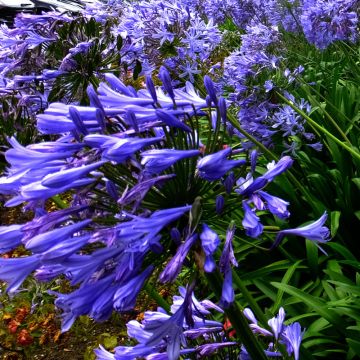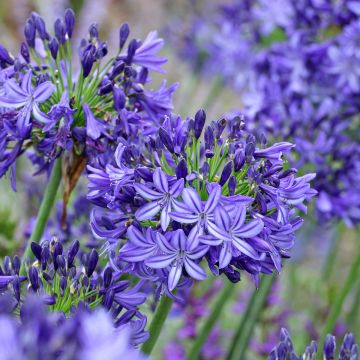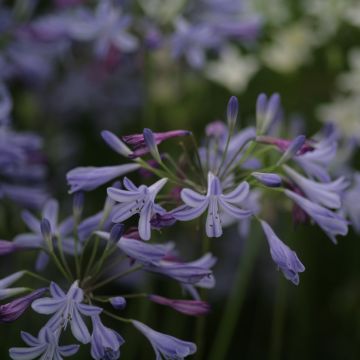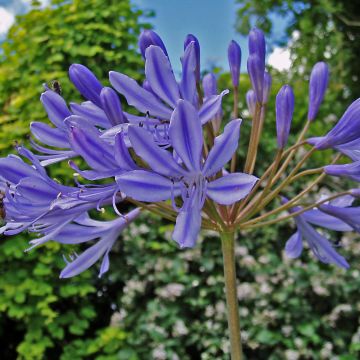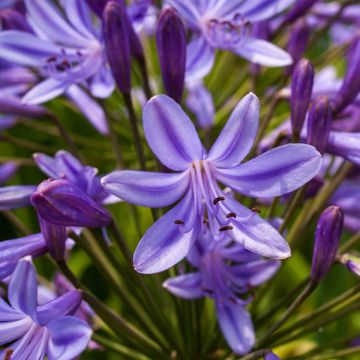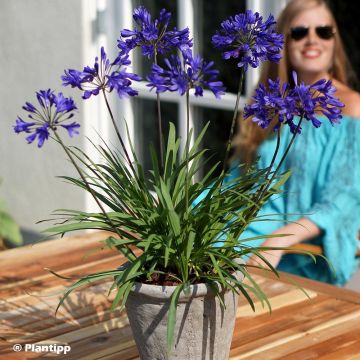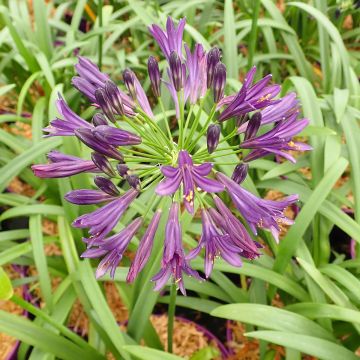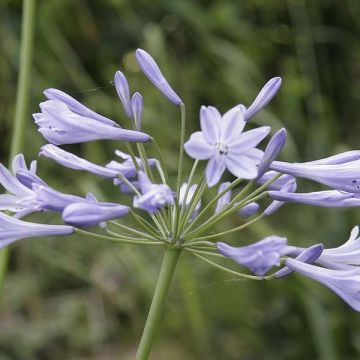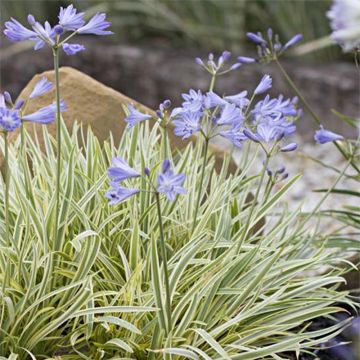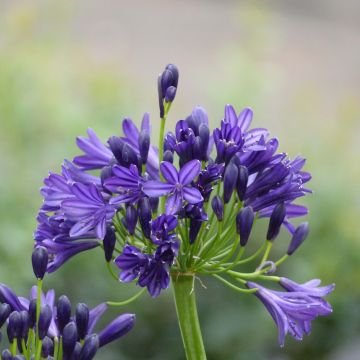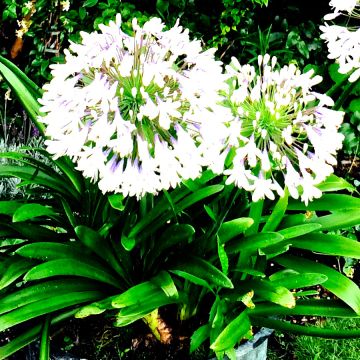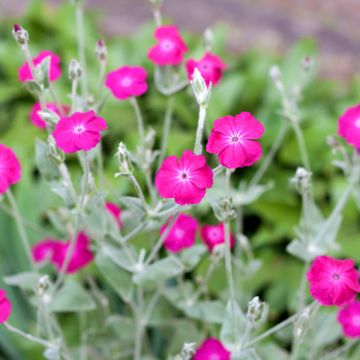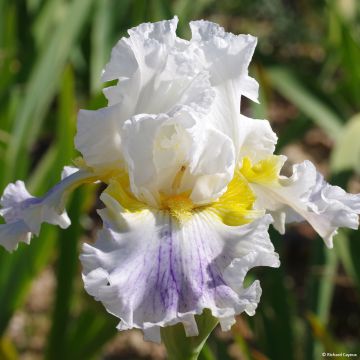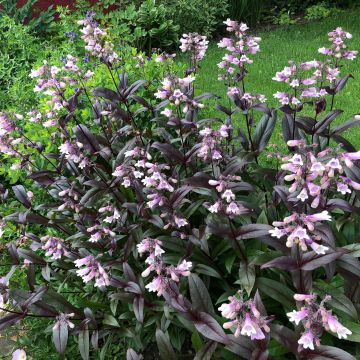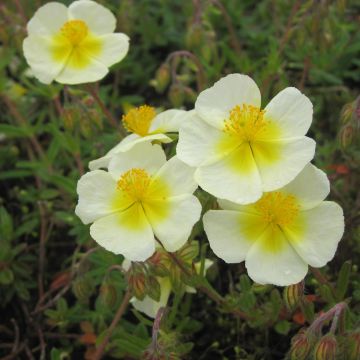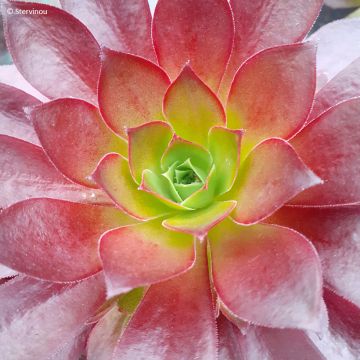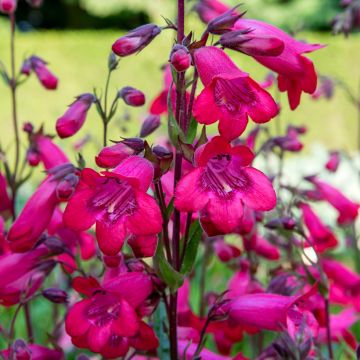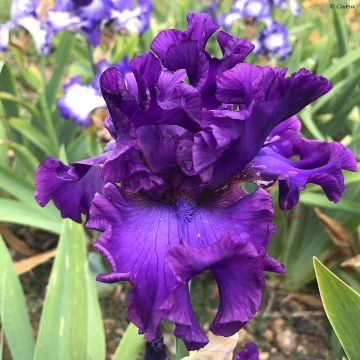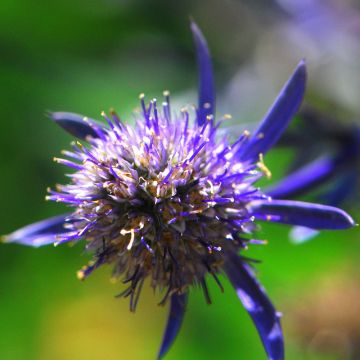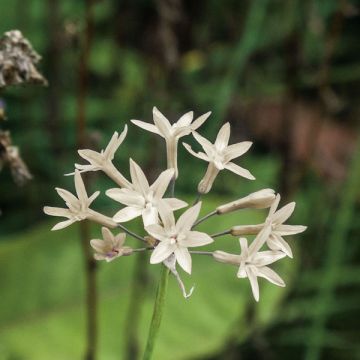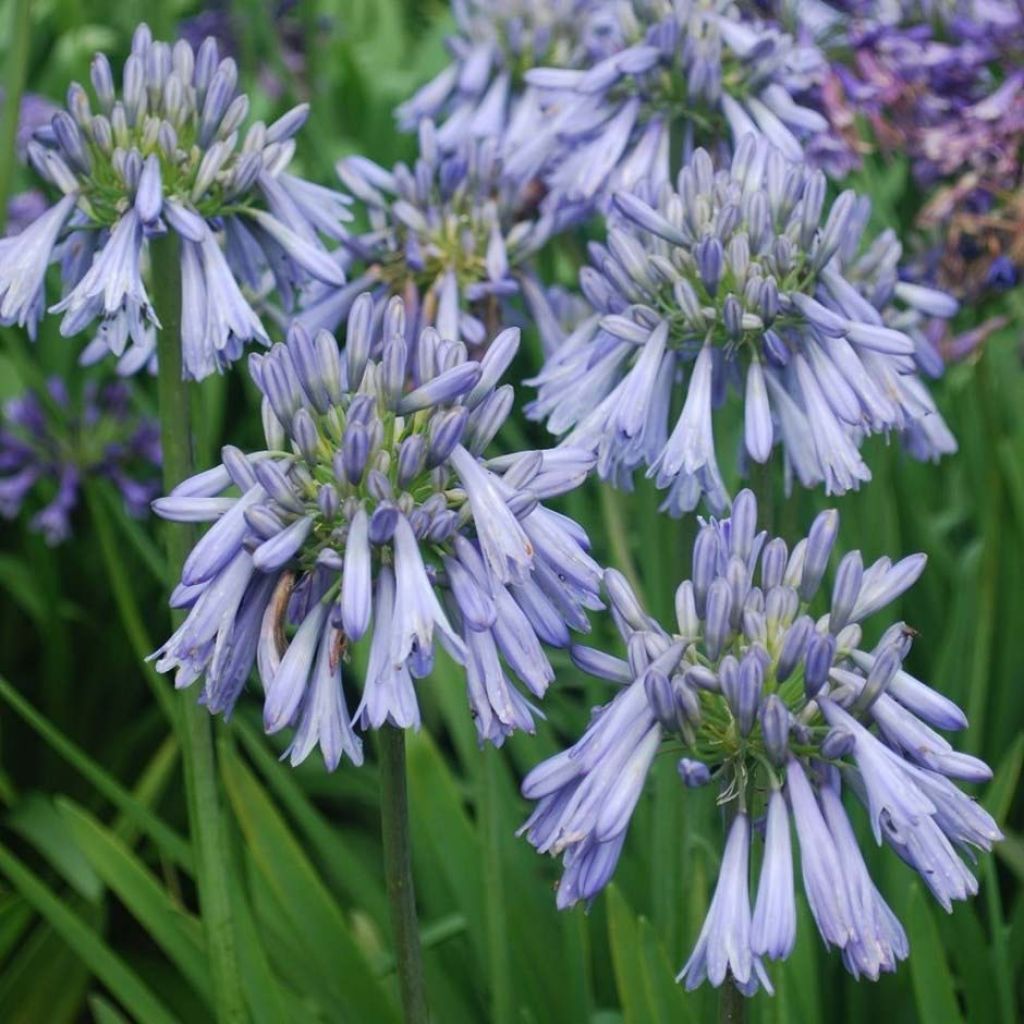

Agapanthus Celebration - Agapanthe
Agapanthus Celebration
Agapanthus Celebration
African Lily, Lily of the Nile
Why not try an alternative variety in stock?
View all →This plant carries a 12 months recovery warranty
More information
We guarantee the quality of our plants for a full growing cycle, and will replace at our expense any plant that fails to recover under normal climatic and planting conditions.
From €5.90 for pickup delivery and €6.90 for home delivery
Express home delivery from €8.90.
Does this plant fit my garden?
Set up your Plantfit profile →
Description
The 'Celebration' Agapanthus is a variety that will offer you its delicate pale blue bell-shaped flowers throughout the summer. Its elongated, tender green and glossy leaves are deciduous. The plant can withstand temperatures as low as -10°C (14°F) to -12°C (10.4°F), making it more suitable for outdoor use than evergreen varieties. A rich, not too dry, acidic to neutral soil in sunny conditions will ensure its harmonious growth, and it will also perform well in pots.
The 'Celebration' Agapanthus is part of a widely spread genus in mild climate gardens, Agapanthus, which belongs to the botanical family Amaryllidaceae (formerly known as Liliaceae). This genus includes 7 species native to South Africa, where they grow in open coastal environments. The thick fleshy rhizomes produce long and arching bright green linear leaves, from which large stems emerge in summer. At their tips, numerous violet, blue or white flowers are gathered in spectacular umbels. Nurseries have done significant selection and hybridization work for decades, resulting in varieties with various colours, denser habit, and improved hardiness. Evergreen Agapanthus are generally the most common in commerce, but deciduous leaf hybrids, which are the hardiest, can also be found.
The 'Celebration' variety is a result of crosses with the botanical species Agapanthus inapertus (the closed flower Agapanthus), which as its name suggests is characterized by very closed trumpet-shaped flowers that are slightly trailing. In 'Celebration', these flowers have a rare and delicate pale blue or lilac hue, and are produced between June and September depending on the climate. The plant, of medium stature, will reach approximately 70cm (28in) in height when flowering, with a diameter of 50cm. It belongs to the deciduous leaf varieties, thus showing resistance to moderate frosts (-10 to -12°C (14 to 10.4°F)).
The cultivation of 'Celebration' Agapanthus is relatively simple: it prefers an acidic to neutral, moist but well-drained and rather rich soil. While the plant tolerates summer drought, avoid letting the substrate completely dry out to maintain flowering. The clumps spread slowly. Its hardiness is quite good, but it requires planting in rockeries under not too cold climates or in very sheltered locations such as a patio. If your region is too cold, pot cultivation in a cold greenhouse is recommended. For colourful and exotic scenes, combine it with other Agapanthus varieties like 'Ever Sapphire', dark blue, or 'Queen Mum', white, but also with Beschorneria septentrionalis, Agave neomexicana, or Yucca rostrata. All of them are exotic plants with respectable hardiness.
Agapanthus Celebration in pictures
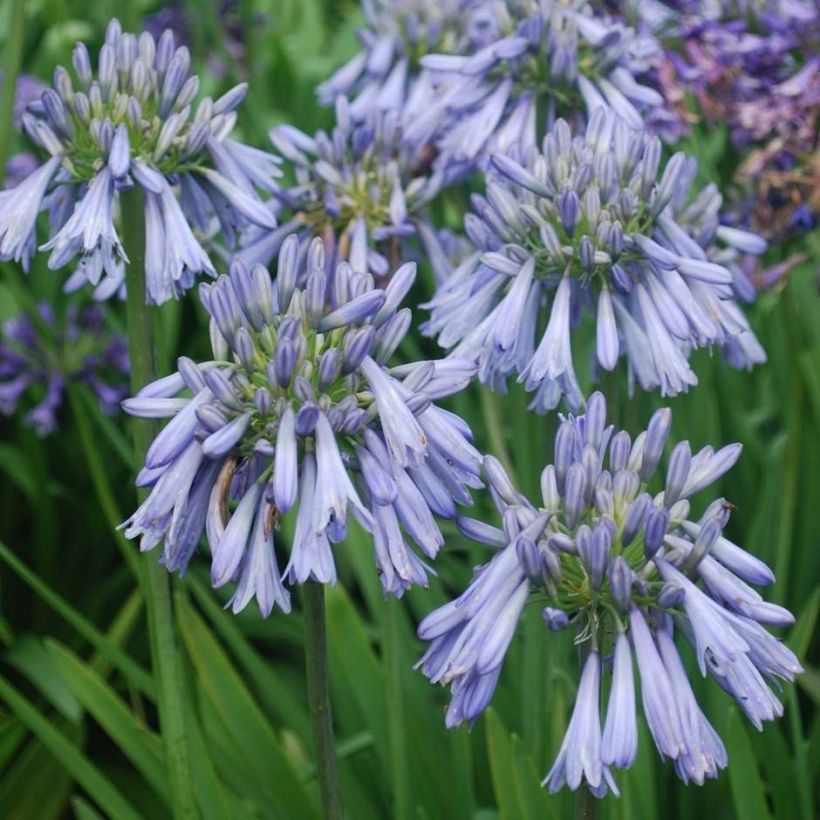

Flowering
Foliage
Plant habit
Botanical data
Agapanthus
Celebration
Amaryllidaceae
African Lily, Lily of the Nile
Cultivar or hybrid
Other Agapanthus - Lily of the Nile
Planting and care
Plant Agapanthus stumps by covering them with at least 10cm (4in) of good soil so that they are more resistant to the cold. It is essential to install them in spring and preferable to mulch them in winter in most of our regions. For pot cultivation, use 5 young plants for a 24cm (9in) pot and shelter your pots in winter. They prefer a rich and moist but well-drained soil, enriched with sand. Water them regularly during the growth period (twice a week). Avoid watering them afterwards. They are sensitive to winter humidity. This variety is hardy up to -10/-12°C (14/10.4°F) in a sheltered position and thrives particularly well in flower borders and containers. Use a well-drained sandy mix, slightly acidic. This plant seems to prefer shallow but wide containers and will flower abundantly if regularly fed with slow-release fertilizer.
Planting period
Intended location
Care
This item has not been reviewed yet - be the first to leave a review about it.
Mediterranean perennials
Haven't found what you were looking for?
Hardiness is the lowest winter temperature a plant can endure without suffering serious damage or even dying. However, hardiness is affected by location (a sheltered area, such as a patio), protection (winter cover) and soil type (hardiness is improved by well-drained soil).

Photo Sharing Terms & Conditions
In order to encourage gardeners to interact and share their experiences, Promesse de fleurs offers various media enabling content to be uploaded onto its Site - in particular via the ‘Photo sharing’ module.
The User agrees to refrain from:
- Posting any content that is illegal, prejudicial, insulting, racist, inciteful to hatred, revisionist, contrary to public decency, that infringes on privacy or on the privacy rights of third parties, in particular the publicity rights of persons and goods, intellectual property rights, or the right to privacy.
- Submitting content on behalf of a third party;
- Impersonate the identity of a third party and/or publish any personal information about a third party;
In general, the User undertakes to refrain from any unethical behaviour.
All Content (in particular text, comments, files, images, photos, videos, creative works, etc.), which may be subject to property or intellectual property rights, image or other private rights, shall remain the property of the User, subject to the limited rights granted by the terms of the licence granted by Promesse de fleurs as stated below. Users are at liberty to publish or not to publish such Content on the Site, notably via the ‘Photo Sharing’ facility, and accept that this Content shall be made public and freely accessible, notably on the Internet.
Users further acknowledge, undertake to have ,and guarantee that they hold all necessary rights and permissions to publish such material on the Site, in particular with regard to the legislation in force pertaining to any privacy, property, intellectual property, image, or contractual rights, or rights of any other nature. By publishing such Content on the Site, Users acknowledge accepting full liability as publishers of the Content within the meaning of the law, and grant Promesse de fleurs, free of charge, an inclusive, worldwide licence for the said Content for the entire duration of its publication, including all reproduction, representation, up/downloading, displaying, performing, transmission, and storage rights.
Users also grant permission for their name to be linked to the Content and accept that this link may not always be made available.
By engaging in posting material, Users consent to their Content becoming automatically accessible on the Internet, in particular on other sites and/or blogs and/or web pages of the Promesse de fleurs site, including in particular social pages and the Promesse de fleurs catalogue.
Users may secure the removal of entrusted content free of charge by issuing a simple request via our contact form.

































